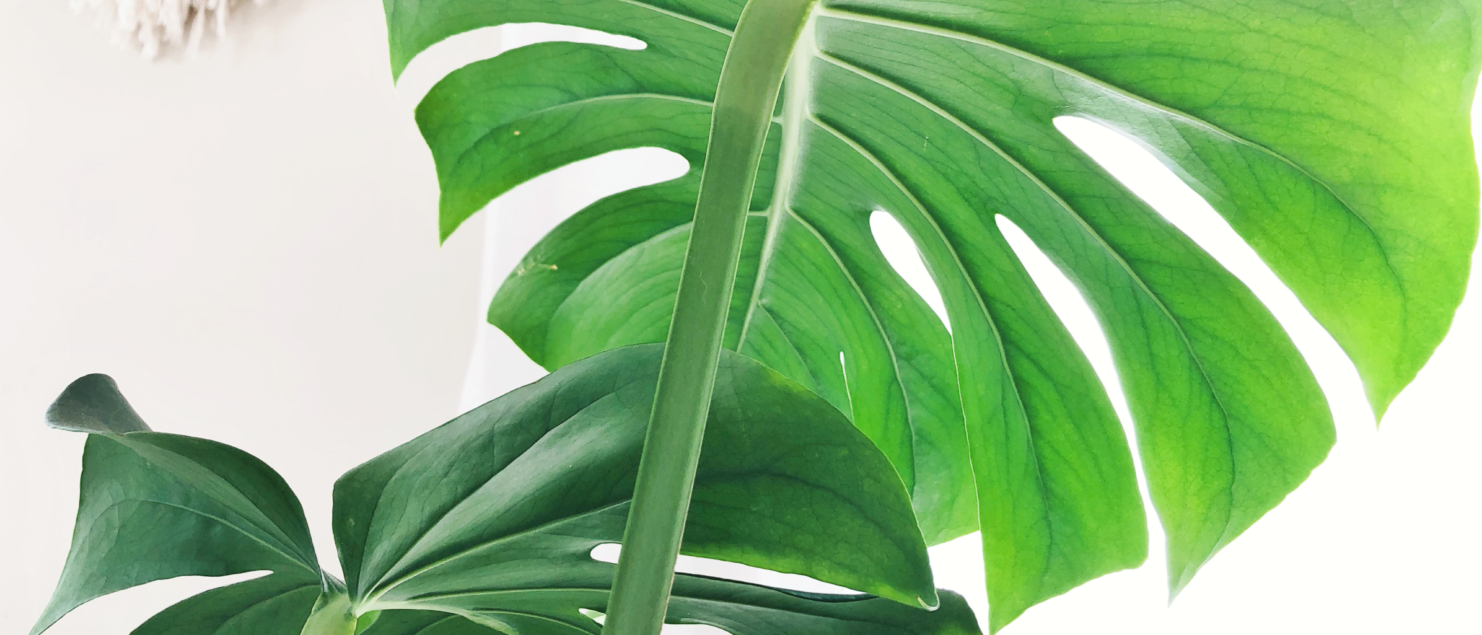Complete Monstera Deliciosa Care Guide
Who doesn’t love a Monstera Deliciosa?!
The Monstera Deliciosa is a wildly popular houseplant. The Monstera is not only one of the easiest plants to care for in the home, but it’s also an iconic staple in home décor today and has been since the 1960’s, and perhaps even later. This tropical leafy beauty is one that pretty much everyone has in their home, or at least knows of someone who does.
Due to their popularity, the monstera can be easily found in many department stores or plant shops. Honestly, you can’t go into a place that sells plants without spotting at least one Deliciosa.
Caring for a Monstera Deliciosa is just as easy, as to find them. I’m going to go over everything you’ll need to know about caring for these sought-after jungle-y houseplants with this complete Monstera Deliciosa care guide.
What The Monstera Deliciosa?
The Monstera Deliciosa is native to Central America – from southern Mexico to Panama. Monsteras have been also found in other tropical places like Hawaii. Due to the rate of growth and size of growth, the Monstera Deliciosa has become a semi-invasive species on the islands of Hawaii.
But honestly whenever I think of Hawaii, I picture Hibiscus and Monsteras.

There are many names of the Monstera Deliciosa, like the Swiss Cheese Plant. It’s also commonly mistaken as a Split Leaf Philodendron, but it’s not a Philodendron at all. The Monstera is part of the Araceae family, which makes them an Aroids.
Behaviors & Characteristics
Foliage
You can tell that a plant is a Monstera due to its unmistakably recognizable leaves. Those are called fenestrations and are those iconic splits and holes that the monstera makes in its leaf.

These holes and spits are very useful to the plant in the wild and has developed them over a long period of evolution. Fenestrations are important due to the tropical weather this plant can face, like hurricanes. The wind and rain can easily glide through the spaces in the leaves without causing any damage to the foliage.
Growth Patterns
This plant starts its growing journey on the floors of the tropical forests. In nature the Monstera will climb up tree trunks grabbing on to the bark with its aerial roots, making this aroid a vining plant.
In your home, you may notice these long cream-colored stems growing out of your plant, these are the aerial roots. They can attach easily to any organic material such as a moss pole or a wood block. They will appreciate it if you can guide the roots back into soil, as an alternative to moss. Helping this Monstera climb in your house will promote it to create more fenestrated and larger leaves that everyone is looking for.

Once this plant matures it will create these ruffly parts of the stem where the stem meets the leaf. If your Monstera is showing the ruffles, you got yourself a true Deliciosa. If you don’t notice any ruffling, you may have a Borsigiana, which closely resembles a Monstera Deliciosa.
How It Got Its Name
While it’s not common in indoor Deliciosa to, given the right conditions this plant produces fruit, and it’s basically how it got its name. The fruit this plant produces is known as a delicacy.
It resembles a green ear of corn, but the edible portion of the fruit is a white/creamy colored part found under the green skin. People who have tried it says the flavor closely resembles a banana, strawberry, or pineapple.
Monstera Deliciosa Care
Watering
Your Monstera will need to be watered every 1-2 weeks. Just like most houseplants, make sure that the top few inches are dry before watering. If your Monstera is in higher lighting you may need to water more often.
It’s not necessary to water with filtered or distilled, but it will benefit the plant from not receiving any unwanted minerals that can be found in tap water. On occasion, tap water is ok.
Fertilizing
Keeping your Monstera happy and growing wildly in your home starts with fertilizer, because remember this is their “food”.
Fertilizing your Monstera 1-2x’s per month with a balanced NPK fertilizer during the spring and summer will have this plant bursting with new growth. Make sure you slow down the fertilization process in the non-growing seasons of fall and winter.
Lighting
When it comes to Monstera Deliciosa care, this is one of the most low-key importance for your Monstera’s health. These plants will thrive in a medium-bright filtered lighting. Remember how they live in the wild, under canopies receiving filtered light through the trees.

Keep your Deliciosa out of direct sunlight, especially in the afternoon. This can burn the leaves, which can create yellowing.
Temperature and Humidity
Even though we know that this plant is native to a tropical forest, this Monstera does well in most household environments with the humidity levels ranging from 30-40% and temperatures from 60-80 degrees.
Soil
A good chunky well-draining soil mixture is perfect for the Monstera Deliciosa. Normally the average potting mix with a little sphagnum moss, perlite, and orchid bark added will make for a good mixture that will be draining while also holding a little moisture.
Common Problems & Toxicity
Monsteras are susceptible to many houseplant pests like spider mites and thrips. Aside from pests, monsteras are also known for their yellowing leaf issues.
If your Monsteras foliage is turning yellow, you’ll want to make sure you’re not over or under watering. Yellow leaves often pop up when root rot is present so make sure you rule that out by checking on the root ball for any black or dark brown mushy roots.
Identify your leaf issues in depth with this guide: Common Leaf Problems With Houseplants
When watering isn’t an issue the next thing you’ll want to look for is pests. Checking the top and underside of each leaf and the stems to make sure that no bugs have made your Monstera their new home. These plants are hearty so using neem oil or a houseplant pesticide won’t harm the foliage.
Here’s how to get rid of pest on your houseplants: Common Houseplant Pests & How To Get Rid Of Them
Monsteras are also mildly toxic to pets, so make sure they are out of reach of our furry friends.
Monstera Mania
While basic and common, the Monstera Deliciosa is an absolute showstopper and instantly recognizable.

Monsteras have been on the rise for decades. While there are many different types of Monstera’s out there the Deliciosa seems to reign supreme, other than its boujee cousin the Monstera Albo (if you can even get your hands on one).
So if you don’t have this quick growing & easy going girl in your collection – what are you waiting for?!
I hope this Monstera Deliciosa care guide was helpful to make your Monstera’s happy and thriving!

